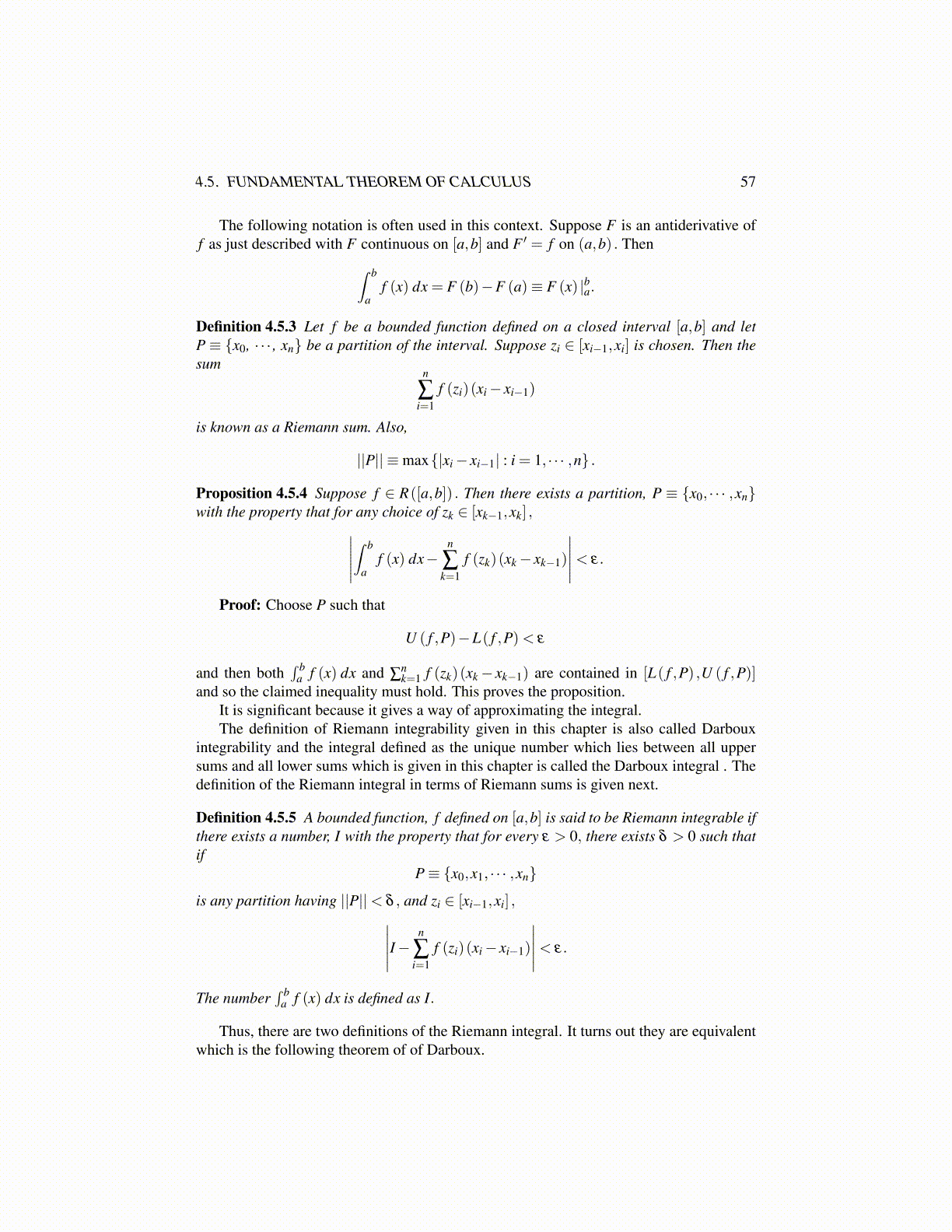
4.5. FUNDAMENTAL THEOREM OF CALCULUS 57
The following notation is often used in this context. Suppose F is an antiderivative off as just described with F continuous on [a,b] and F ′ = f on (a,b) . Then∫ b
af (x) dx = F (b)−F (a)≡ F (x) |ba.
Definition 4.5.3 Let f be a bounded function defined on a closed interval [a,b] and letP ≡ {x0, · · · , xn} be a partition of the interval. Suppose zi ∈ [xi−1,xi] is chosen. Then thesum
n
∑i=1
f (zi)(xi− xi−1)
is known as a Riemann sum. Also,
||P|| ≡max{|xi− xi−1| : i = 1, · · · ,n} .
Proposition 4.5.4 Suppose f ∈ R([a,b]) . Then there exists a partition, P ≡ {x0, · · · ,xn}with the property that for any choice of zk ∈ [xk−1,xk] ,∣∣∣∣∣
∫ b
af (x) dx−
n
∑k=1
f (zk)(xk− xk−1)
∣∣∣∣∣< ε.
Proof: Choose P such that
U ( f ,P)−L( f ,P)< ε
and then both∫ b
a f (x) dx and ∑nk=1 f (zk)(xk− xk−1) are contained in [L( f ,P) ,U ( f ,P)]
and so the claimed inequality must hold. This proves the proposition.It is significant because it gives a way of approximating the integral.The definition of Riemann integrability given in this chapter is also called Darboux
integrability and the integral defined as the unique number which lies between all uppersums and all lower sums which is given in this chapter is called the Darboux integral . Thedefinition of the Riemann integral in terms of Riemann sums is given next.
Definition 4.5.5 A bounded function, f defined on [a,b] is said to be Riemann integrable ifthere exists a number, I with the property that for every ε > 0, there exists δ > 0 such thatif
P≡ {x0,x1, · · · ,xn}
is any partition having ||P||< δ , and zi ∈ [xi−1,xi] ,∣∣∣∣∣I− n
∑i=1
f (zi)(xi− xi−1)
∣∣∣∣∣< ε.
The number∫ b
a f (x) dx is defined as I.
Thus, there are two definitions of the Riemann integral. It turns out they are equivalentwhich is the following theorem of of Darboux.